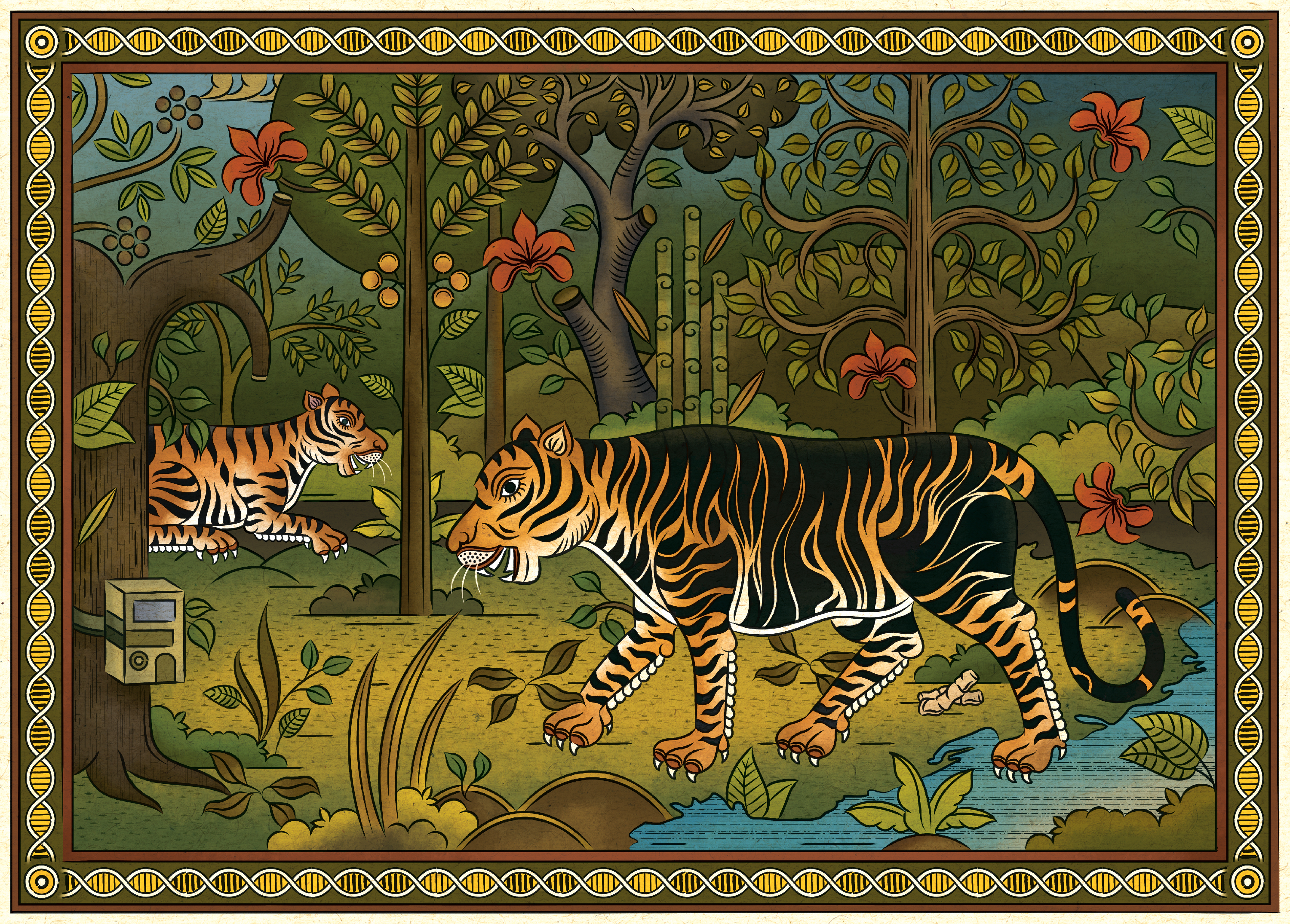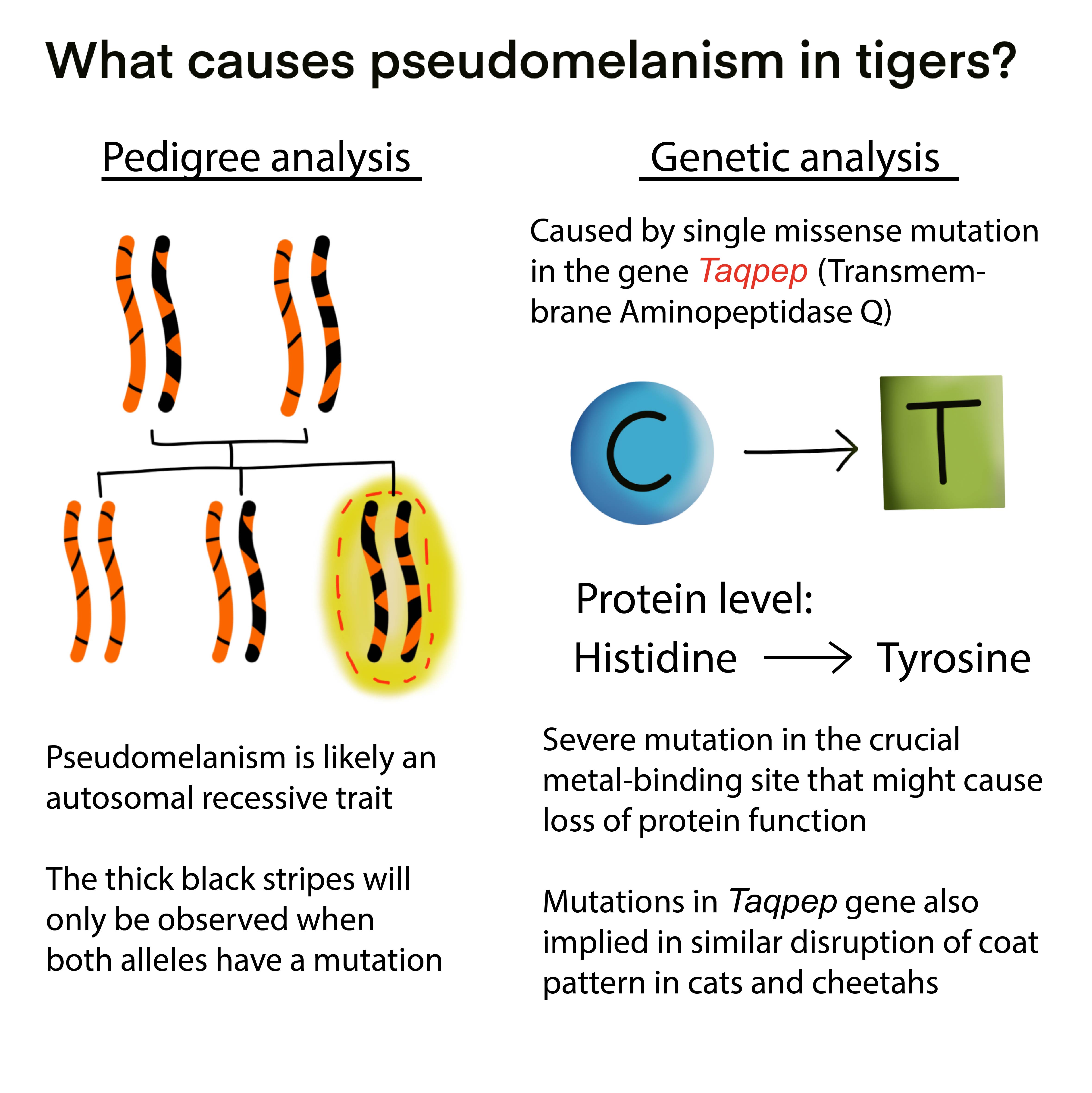



Tiger is the largest among all big cats. Nandankanan Zoological Park is breeding tigers since 1966 and a participating zoo for conservation breeding of Indian tiger since 2009. There are 350 births recorded in the zoo since 1966, including 34 birth under the conservation breeding programme i.e., after 2009. The zoo has sent tigers to the coordinating zoo, Nehru Zoological Park, Hyderabad in 2016, and received wild tigress from Nandanvan Zoo, Bhopal in 2009 and a zoo bred tiger with 33% wild gene from Nehru Zoological Park, Hyderabad in 2016 to infuse new blood line and increase heterozygosity. Presently the zoo is having 24 tigers (14:10) and going ahead with conservation breeding programme.




Nandankanan hosts a unique colour morph of tigers commonly called “Black” or “Melanistic” tigers. In reality these are pseudomelanistic tigers which have broad and black strips. Pseudomelanism is caused by a mutation in Taqpep gene, a spelling mistake in DNA. In the wild psudomelanistic tigers occur only in Similipal Tiger Reserve, Odisha possibly because of inbreeding (mating between related individuals) and genetic drift (random selection of mating partners) in a small and isolated population. Interestingly on 28/07/2014 the first pseudomelanistic tiger (male) to Sneha (White Female) and Manis (Normal Coloured Male). Thereafter 3 more male pseudomelanistic cubs have been born, of which one male was sent to Indore Zoo under an Animal Exchange programme. Besides Nandankanan, Chennai Zoo, Ranchi Zoo and Indore Zoo have bred pseudomelanistic tigers. Pedigree analysis has revealed a linkage of the above zoos’ pseudomelanistic tigers with the Nandankanan zoo lineage, which in turn has linkage with the Similipal tiger population.

